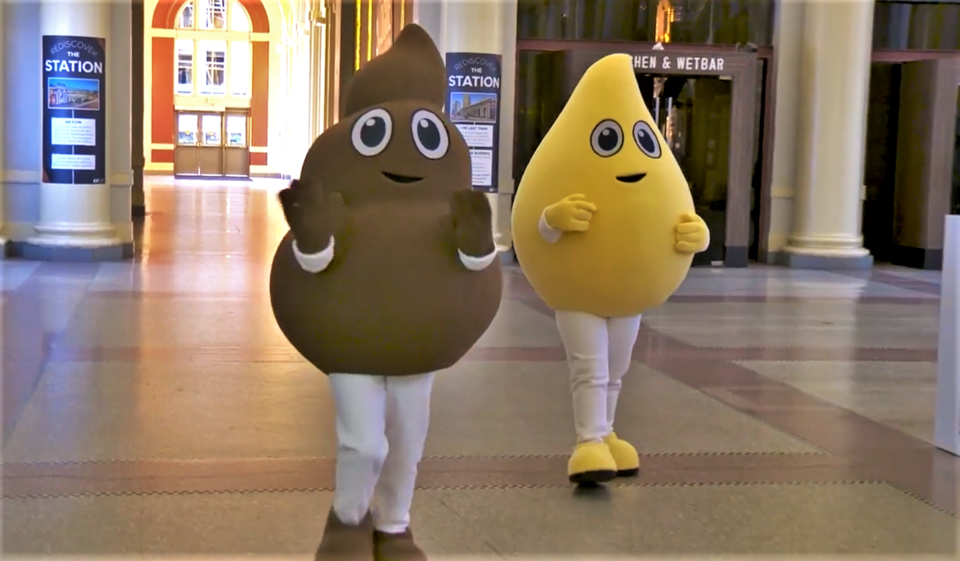While wastewater is not considered the most high class subject to discuss, in a city of over 2.4 million it carries a certain weight.
The city's sewage system is one of the many things that connects Vancouver, actually, with 22 municipalities joined together through Metro Vancouver, sharing a system that spans from Langley Township to West Vancouver to Tsawassen (in fact, there are some in Point Roberts that want in on the system). That system has 15,000 km of pipe.
While it's not a popular topic to talk about, toilet stories end up in the news often enough, from man flagging dog droppings at a Metro Vancouver park to the 13,000 poops cleaned off Vancouver streets in 2021. It's not always about the gross factor, either, there are fun or funny stories, like the flushing heard on a council meeting or Surrey's public toilet nearly being named Canada's best (a spot in Edmonton ended up winning).
Here are some fun facts about that system other Vancouver poop facts.
1. It heats a Vancouver neighbourhood and powers a sculpture
The False Creek Neighbourhood Energy Utility may have an exceedingly boring name, but it's actually a neat bit of technology.
In technical terms, it transfers thermal energy from wastewater to a system that provides heating and hot water to buildings around the southeast corner of False Creek. And the city wants to keep expanding the project.
"There is far more waste heat available in the sewage pipes running under the streets of Vancouver than we are currently tapping into," notes the City on its website.
On top of moving heat from sewage to homes, it also powers the lights on some stacks near the Cambie Street Bridge.
"The design concept called for each finger-like stack to be topped with a fingernail-like light fixture," states CDM2 Lightworks. "The nail colour was in response to the amount of energy being generated from the energy centre."
2. Flush dog poop, not cat poop
Some people may know it's ok to flush dog poop down the toilet (as long as that's all that's being flushed, no bags or anything), it may come as a surprise that the poop from the other common furry pet in Vancouver shouldn't be sent the same way.
"Cat feces can contain a parasite Toxoplasma gondii linked to the disease toxoplasmosis. It is unsafe for people, especially pregnant women," says Metro Vancouver.
Unfortunately, that means the only safe way to dispose of cat poops is in a bag in the garbage says the regional government.
3. Meet Pee and Poo
For a hot minute, Vancouver caught the national news cycle for two new mascots. Metro Vancouver, in an effort to remind people about what can and can't be flushed created the Pee and Poo characters a few years ago.
Since their website only lists three things that can be flushed (the two aforementioned materials and toilet paper make up the rather gross trio), they were limited as to who those characters could be, it seems.
4. Public toilet performance art
Leaving the sewage system for a minute to visit a more creative pastime, now's a good time to remember the local artist who spent a week in Vancouver's public washrooms in the name of art.
In 2001 Sarah White performed Expect Delays: Monologues for public/Private Spaces as part of the Expect Delays exhibition.
Globe and Mail journalist Alexandra Gill offered a description of the piece.
"Imagine you are sitting in a public washroom, tending to your private business, when a woman in the adjacent stall suddenly shatters the awkward silence by launching into a chatty monologue about the unwritten rules of proper decorum that normally govern shared spaces," she wrote in advance of the 2003 show.
Oddly enough it doesn't appear there's an archive of this piece being performed.
5. False Creek gets a raw deal
False Creek may not have the grossest water in the Pacific Ocean, but it's certainly not a popular swimming hole.
That's in part due to what's seeped into it. For one, there are many reports of raw sewage being dumped by boaters living there. While there are public free mobile pump-out services, it doesn't seem to have completely solved that issue.
At the same time the city's own system contributes on occasion. A report of activities in 2017 noted 674,000 cubic metres of raw sewage and runoff drained into False Creek at one overflow point. The report





